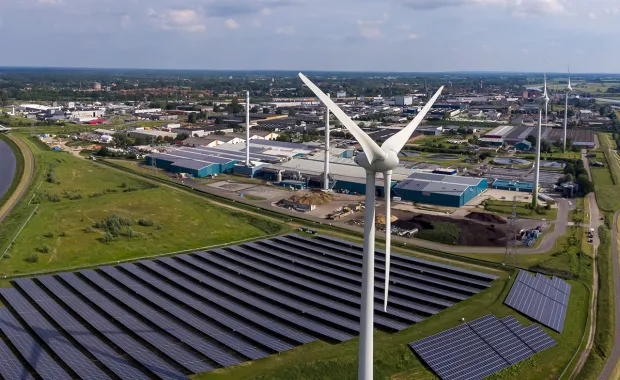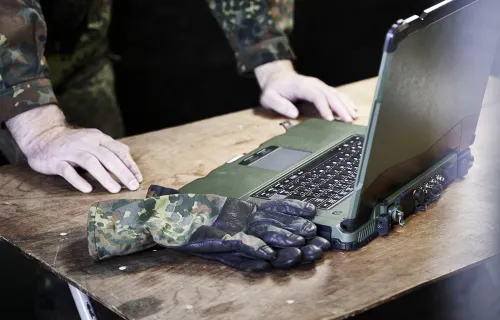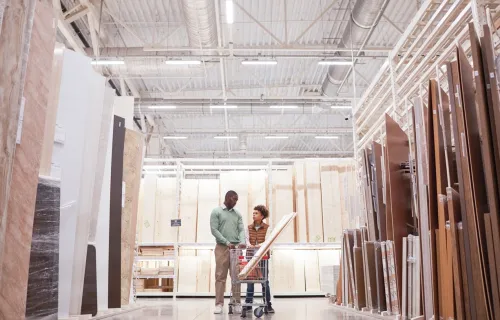Massive change is underway in manufacturing. While the industry is still navigating the long-term impacts of the pandemic, COP26 has signaled an inevitable turning point for the future of manufacturing as it relates to sustainability. This is forcing manufacturers to take a hard look at their operations and rethink their role and contribution in today’s digital age.
Moving from Industry 4.0 to Industry 5.0
Industry 4.0 is not new. Hailed a few years ago as the “future of production,” its primary purpose continues to be achieving seamless connectivity between machines and IT systems for higher productivity and efficiencies across the value chain. Overall, it focuses mainly on traditional financial and operational KPIs. On the other hand, Industry 5.0 has real potential for transformative change. It calls for putting people and the environment back into the equation and ensuring that humans and machines work together to support a digital, green future.
In January 2021, the European Commission published its perspective on Industry 5.0 that considers three key elements that must be given equal importance to achieve holistic digital transformation.
Human awareness – viewing people as an investment and not just a resource
Human awareness relates to the empowerment of current and future workforces. Within Industry 5.0, the relationship between employer and employee will evolve from simply viewing employees as a resource to investing in them on a longer-term basis.
Keeping the human element in mind is also of great importance when it comes to applying advanced analytics that might have a bearing on the workforce.
As such, human awareness in an industrial context places a greater focus on leadership abilities. How do we treat our employees in Industry 5.0? What degree of flexibility and even autonomy do we provide employees? And, last but not least, how mature is our organization to cope with this flexibility or autonomy?
One answer is implementing mechanisms for leaders and employees to develop a constant learning mindset and a spirit of curiosity that is recognized and awarded. This need is not new but has become increasingly important to help employees make a real difference and to attract and retain talented people. Notably, insights from the 2021 Voice of Our Clients reveal that manufacturing’s digital leaders (those achieving expected results from their digital strategies) cite lack of talent as the top constraint to achieving their business priorities.
The future will focus on worker well-being—from real-time safety measures, collaborative possibilities, training on data-driven technologies and enabling virtual support for operations and maintenance.
Sustainability - considering the product and value chain life cycle in addition to consumer behavior
As in life, change comes with risks and opportunities, and this certainly applies to the quest for manufacturers to become more sustainable and achieve net-zero. There are numerous viewpoints on what is more effective—embracing sustainable consumerism or using technology to solve climate challenges.
The answer lies in adopting a clever combination of both. For instance, we see significant advancements in new energy technologies. Furthering the discussion on the energy transition and clean energy concepts such as hydrogen and renewable energy will play a key role. Another increasingly important aspect is embracing a circular economy. The industry will need to explore new ideas to return and recycle rare materials and integrate complementary ecosystem partners to support new business models. According to the 2021 Voice of Our Clients, 71% of manufacturing executives interviewed consider sustainability core to creating value for their customers and view it as a strategy to gain efficiencies and reduce costs.
Moreover, when it comes to tackling CO2 emissions from end to end, in addition to measuring consumer use, measuring emissions along the product life cycle and value chain is critical to achieving carbon reductions. Technologies such as data analytics, earth observation, artificial intelligence, augmented reality and blockchain will support building and implementing sustainability strategies. For instance, collecting and analyzing the right data along the value chain and then incorporating lower CO2 alternatives into the production process will significantly contribute to achieving climate goals.
Technology – achieving maturity to take the next leap
It is difficult to imagine a world without technology. We must connect existing technologies in a clear way, not as a means to an end in themselves, but for the benefit of the people. If we look at the production process from end to end, the following five technology drivers are here to stay:
- Aligning business and IT/OT: The 2021 Voice of Our Clients find that just over half of the manufacturing executives interviewed have an enterprise-wide digital strategy in place, while only 15% are achieving expected results from their digital strategies. Holistic transformation requires business, operations and IT to align and collaborate more efficiently on stakeholder outcomes.
- Connected: Wireless technologies will connect everything: machines, devices, systems and humans. As IT and OT converge and manufacturing becomes more intelligent, digitizing older machines will be key to uncovering unknown information and unlocking the true benefits of data.
- Data-driven factory: By tackling the challenge of unknown data, manufacturers will have the opportunity to leverage the right data to drive insight-led decisions. Once contextualized and given meaning, this data can power automation programs, including machine learning and more advanced AI technologies.
- IT/OT security: With greater connectivity comes greater vulnerabilities to cyber-attacks. Manufacturers must prioritize assessing the risk of their IT/OT environments to implement the right security measures and prevent attacks before they happen.
- Factory cloud: The pandemic revealed the vulnerabilities of supply chains. To improve resilience, we believe production and production planning will move to the cloud to support quicker response times, agility and collaboration across plants, including suppliers, on a global scale.
The continued adoption of Industry 4.0 technologies and the introduction of Industry 5.0 ambitions promise an exciting and transformative future for manufacturing. Get in touch with me to learn how our Unified Manufacturing vision is helping some of the world’s leading manufacturers accelerate their digital transformation.






